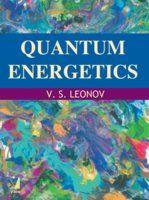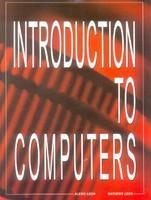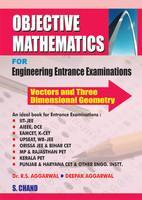

Download App

Quantum Energetics
-
ISBN
:
9788130909554
-
Publisher
:
Cambridge International Science Publishing
-
Subject
:
Others
-
Binding
:
Hardcover
-
Pages
:
732
-
Year
:
2011
₹
1895.0

₹
1895.0
Buy Now
Shipping charges are applicable for books below Rs. 101.0
View DetailsEstimated Shipping Time : 5-7 Business Days
View Details-
Description
Quantum Energetics is based on new fundamental discoveries of quantum of space-time (quanton) and super-strong electromagnetic interaction (SEI) made by Vladinir Leonov in 1996. On the basis of new fundamental discoveries the theory of Super unification of fundamental interactions of electromagnetism, gravitation, nuclear and electro-weak forces is completed. It is important that new fundamental discoveries have the widest practical application in the development of quantum energetics. It is discovered that the single source of energy in the Universe is the qunaton in the structure of quantized space-time, which is the carrier of super-strong electromagnetic interaction. All known methods of energy generation (chemical and nuclear reaction, etc) are reduced to the release and transformation of SEI energy. Quantum energetics is a more general concept in general concept in energetics, which includes both the new energy cycles, and traditional ones, including nuclear energetics. Theory of Super unification Fundamental discovery of the quantum of space-time (quanton) and super-strong electromagnetic interaction (SEI) Electromagnetic nature and structure of cosmic vacuum Integration of electromagnetism and gravitation. Antigravitation Quantized structure of electron and positron. Neutrino Quantized structure of Nature of nuclear forces Double-curl structure of the photon. Photon gyroscopic effect Nature of non-radiation and radiation of orbital electron Thermal photons. Molecule recoil in photon radiation Gravitation waves. Wave equations Physics of open quantum-mechanical systems. Table of Contents Fundamental discoveries of the quantum of space-time (quanton) and super strong electromagnetic interaction The need for introducing the space-time quantum into physics Main problems on the road to Superunification theory Problem of energy levels Problem of motion Problem of mass Problem of relativity The universe: Boiling "bouillon" of quantons Introduction "Bouillon" from quantons How to weld elementary particles Return to the light-bearing (luminiferous) medium Gravity Inertia Black holes Antigravitation. Minus mass. White holes Problem of time Chronal fields Who lights up stars? Superstrings Main problems of modem physics Problems of inflationary theory The Einstein posthumous phrase Conclusion to chapter Electromagnetic nature and structure of cosmic vacuum Introduction Electromagnetic quantisation of space-time Basis of the theory of EQM and Super unification Unification of electricity and magnetism into electromagnetism. Structure of the quanton The charge of the Dirac monopole Dimensions of the quanton Symmetry of electricity and magnetism inside a quanton The structure of the monopole-quark Electromagnetic quantisation of space Electrical symmetry of space The speed of movement of the space clock Stability and energy capacity of the quanton Disruption of electrical and magnetic equilibrium of the quantized space-time The state of electromagnetic equilibrium of quantised space-time Disruption of electrical and magnetic equilibrium in statics Disruption of electromagnetic equilibrium in dynamics Maxwell equations Displacement of the charges in the quanton and bias currents Displacement of the charges in the quanton in statics Polarisation energy of the quanton Nature of electromagnetic oscillations in vacuum Quantisation of the electromagnetic wave Circulation of electrical and magnetic fluxes in the electromagnetic wave Transfer of energy by the quanton in the electromagnetic wave Electromagnetic tensioning of vacuum Strings and superstrings Elastic quantised medium (EQM) Tensioning of the electromagnetic superstring Tension tensor in vacuum Conclusions for chapter 2 Unification of electromagnetism and gravitation Antigravitation Introduction Nature of the electromagnetic wave. The luminiferous medium Return to the luminiferous medium Optical media Fizeau experiment Fundamentals of gravitation theory Two-component solution of Poisson equation Deformation vector D Equivalence of energy and mass Gravitational diagram Black hole Additional gravitational potentials Newton gravitational law Reasons for relativism Relativistic factor The normalised relativistic factor Dynamic balance of gravitational potentials Limiting parameters of relativistic particles Hidden mass Mass balance Hidden energy Energy balance Dynamic Poisson equations Dynamic curvature of space-time The speed of light Nature of gravity and inertia Formation of mass Reasons for gravity and inertia Simple quantum mechanics effects The principle of relative-absolute dualism. Bifurcation points Energy balance Absolute speed Energy paradox of motion dynamics Resistance to movement in vacuum Dynamics equations Bifurcation points Complex speed Relativistic momentum Wave mass transfer. Gravitational waves Time problems Chronal waves Antigravitation Accelerated recession of galaxies Dimensions of the space-time quantum (quanton) Conclusions for chapter 3 The quantised structure of the electron and the positron The neutrino Introduction Classic electron radius Gravitational boundary of the electron Electrical radius of the electron Hidden energy and electron mass Many relationships of electron parameters Gravitational diagram and electron zones The gravitational attraction zone Equivalence of gravitational and electromagnetic energies Tensioning of the medium by the electron Gravitational well of the electron The zone of antigravitational repulsion The zone of the minus mass of the electron Annihilation of the electron and the positron The effect of electrical force on the quanton in the electron Effect of the spherical magnetic field of the quanton Electron spin Electron energy balance Tunnelling of the charge and wave transfer of electron mass Conclusions Quantised structure of nucleons. The nature of nuclear forces Introduction Problem of the nucleon mass Shell sign-changing model of the nucleon Shell models of the proton Shell models of the neutron Structure of nucleon shells Prospects for splitting the nucleon into elementary components Electrical nature of nuclear forces Analytical calculation of nuclear forces Electrical energy of nuclear forces Electrical potential of nuclear forces Calculation of neutron interaction Proton-proton interaction Nuclear forces in quantum mechanics The zones of antigravitational repulsion in the nucleon shells Conclusions Two-rotor structure of the photon. Photon gyroscopic effect Introduction Electromagnetic nature of the photon and rotor models Electromagnetic trace of the photon in the quantised medium The wave equation of the photon Total two-rotor structure of the photon Reasons for the deceleration of light in the optical medium Probable capture of atomic centres of the lattice of the optical medium by a photon Vector diagram of the complex speed of the photon in the optical medium Wave trajectory ofthe photon in the optical medium Forces acting on the photon in the optical medium Refractive index of the optical medium Conclusions Nature of non-radiation and radiation of the orbital electron Introduction Concept of the discrete quantised electron Special features of the structure of the proton, neutron and the atomic nucleus Reasons for the non-radiation of the orbital electron Reasons for proton radiation of the orbital electron The role of superstrong interaction in photon radiation Gravitational radiation of the atom Probability electronic cloud Conclusions Thermal photons Molecule recoil in photon emission Energy paradox in atom Classic approach to calculating the atom recoil Method of calculating atom (molecule) recoil in photon emission Energy balance of the atom in photon emission Nature of thermal oscillations High temperature superconductivity Leonov"s task Gravitational waves. Wave equations Introduction State of the space-time theory Main static equations of the deformed quantised space-time The balance of gravitational potentials in quantised space-time Limiting mass and energy of relativistic particles Fundamentals of the physics of black holes Deformation vector of quantised space-time Derivation of the equation for the speed of light Distribution of time in space in the form of a chronal field Antimatter and ideal gravitational oscillator Electromagnetic quantisation of space-time Derivation of the Maxwell equations and electromagnetic waves Equivalence of electromagnetic and gravitational energies Electron structure Gravitational waves in quantised space-time Report by V. Leonov on the generation of a gravitational wave Superstrong electromagnetic interaction and prospects for the development of quantum energetics in the 21st century World economy and scientific and technical revolutions Scientific errors and new energy concepts Dependence of the efficiency of the cycle on the energy yield of fuel Quantum thermal energetic. Usherenko effect Quantum reactors Cavitation heating Quantum engines. The Searl effect Practical application of quantum engines New generation automobiles Spaceships and aircraft Quantum engines-generators Forecast of the development of quantum power engineering in 21st century Results of the tests of a quantum engine for generating thrust without the ejection of reactive mass Simple instrument for studying the elastic properties of quantised space-time What will the launching of the Large Hadron Collider at CERN yield? Priority of Usherenko (1947) in the region of cold synthesis Leonov"s forecast for 100 years Conclusion for Index.












 1895.0
1895.0












 0.0
0.0